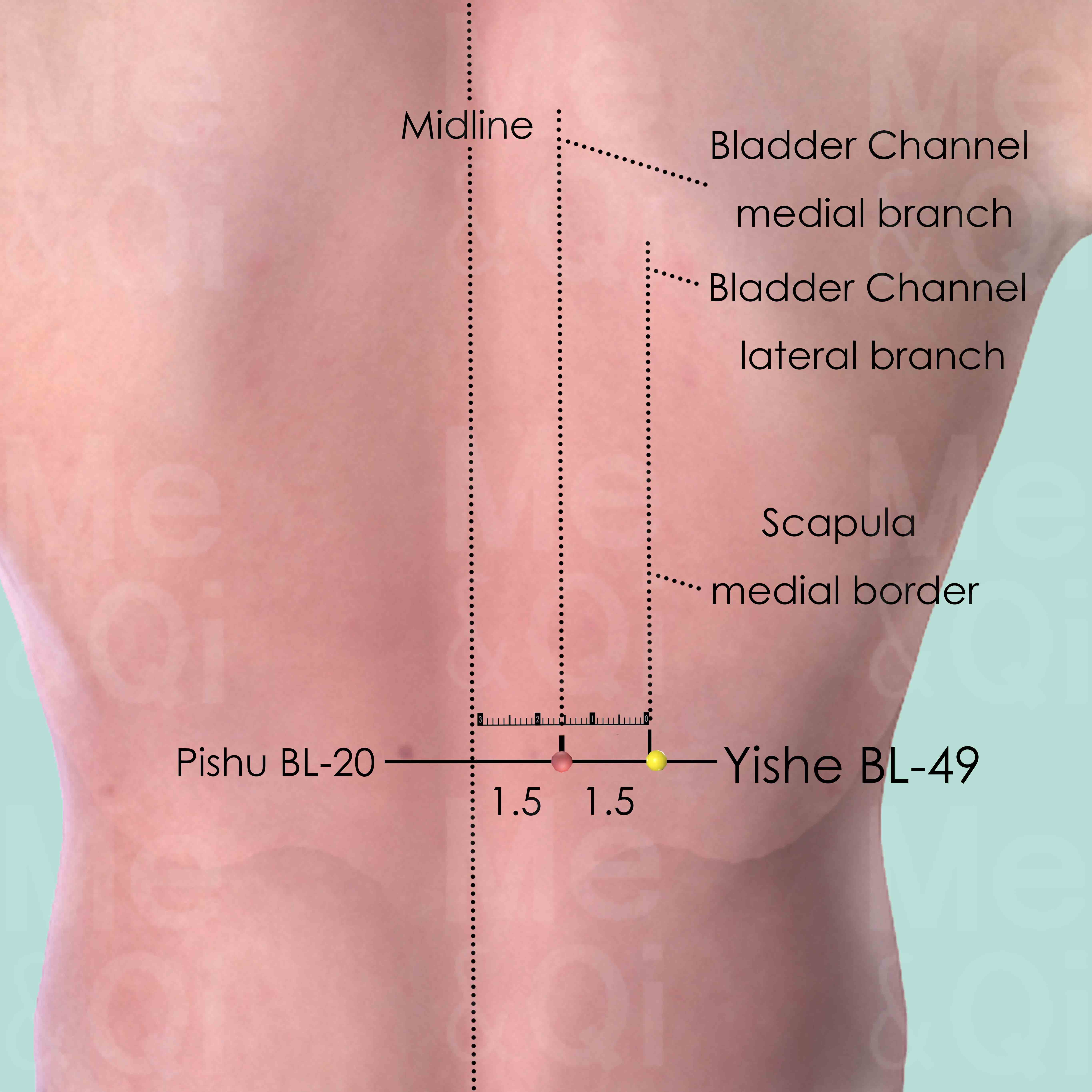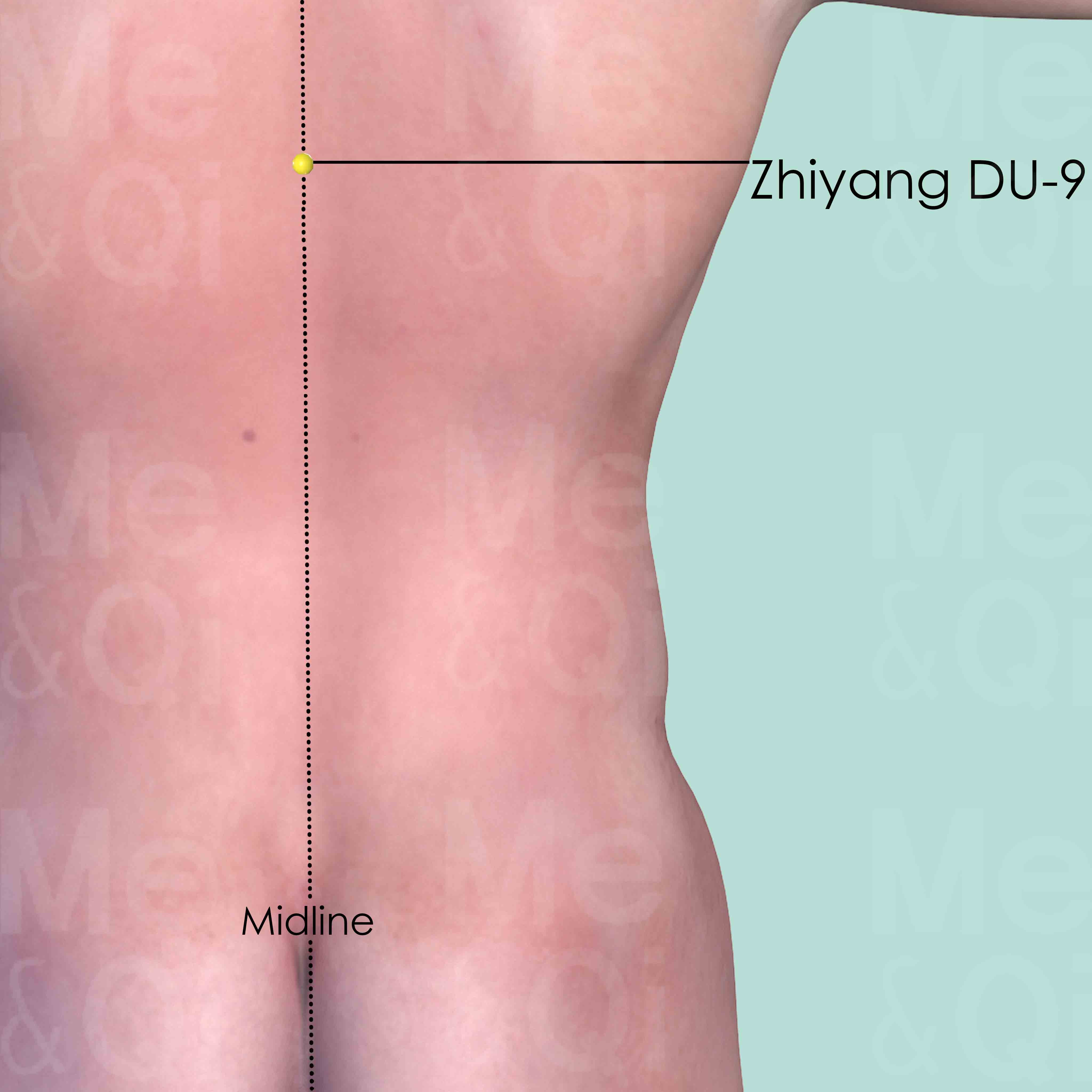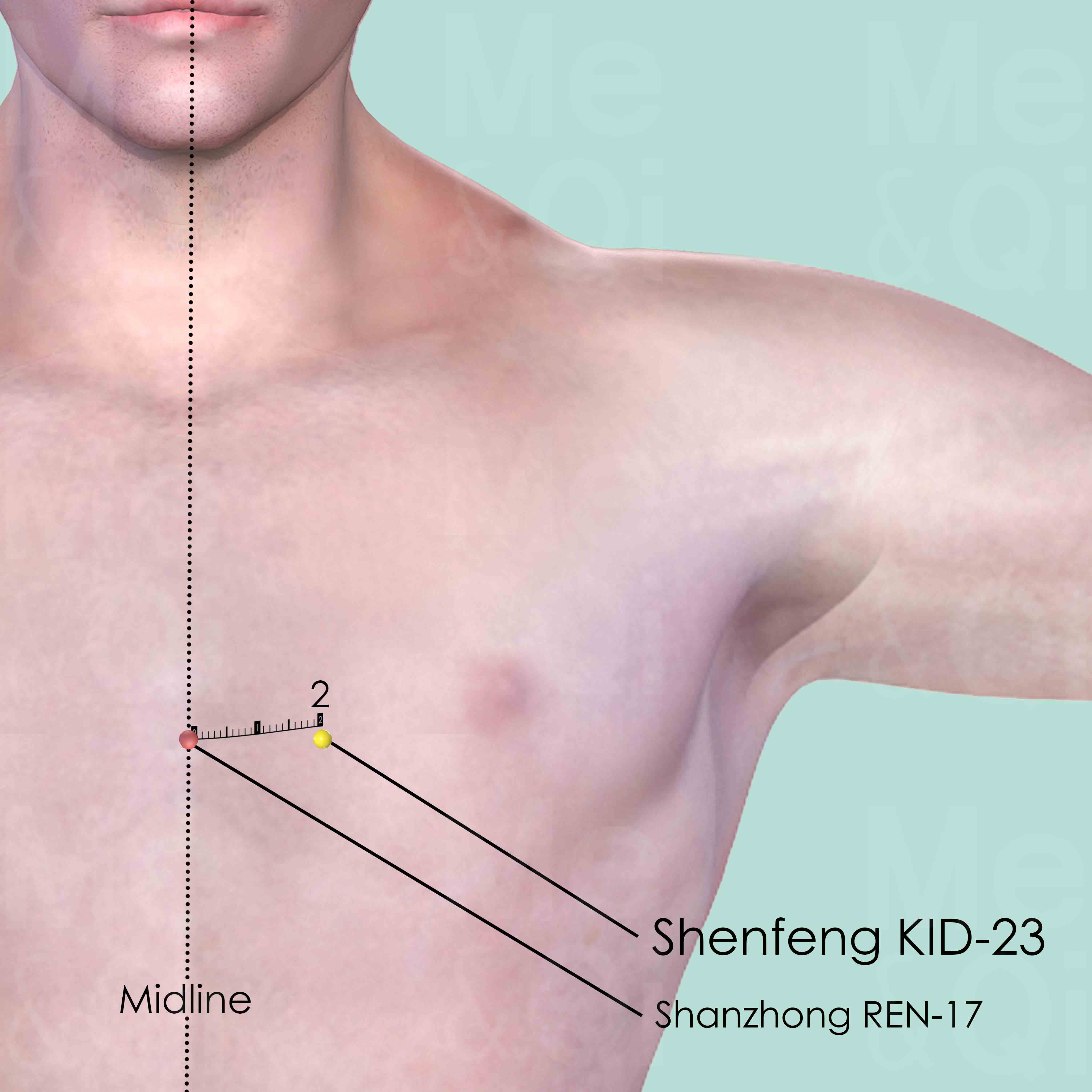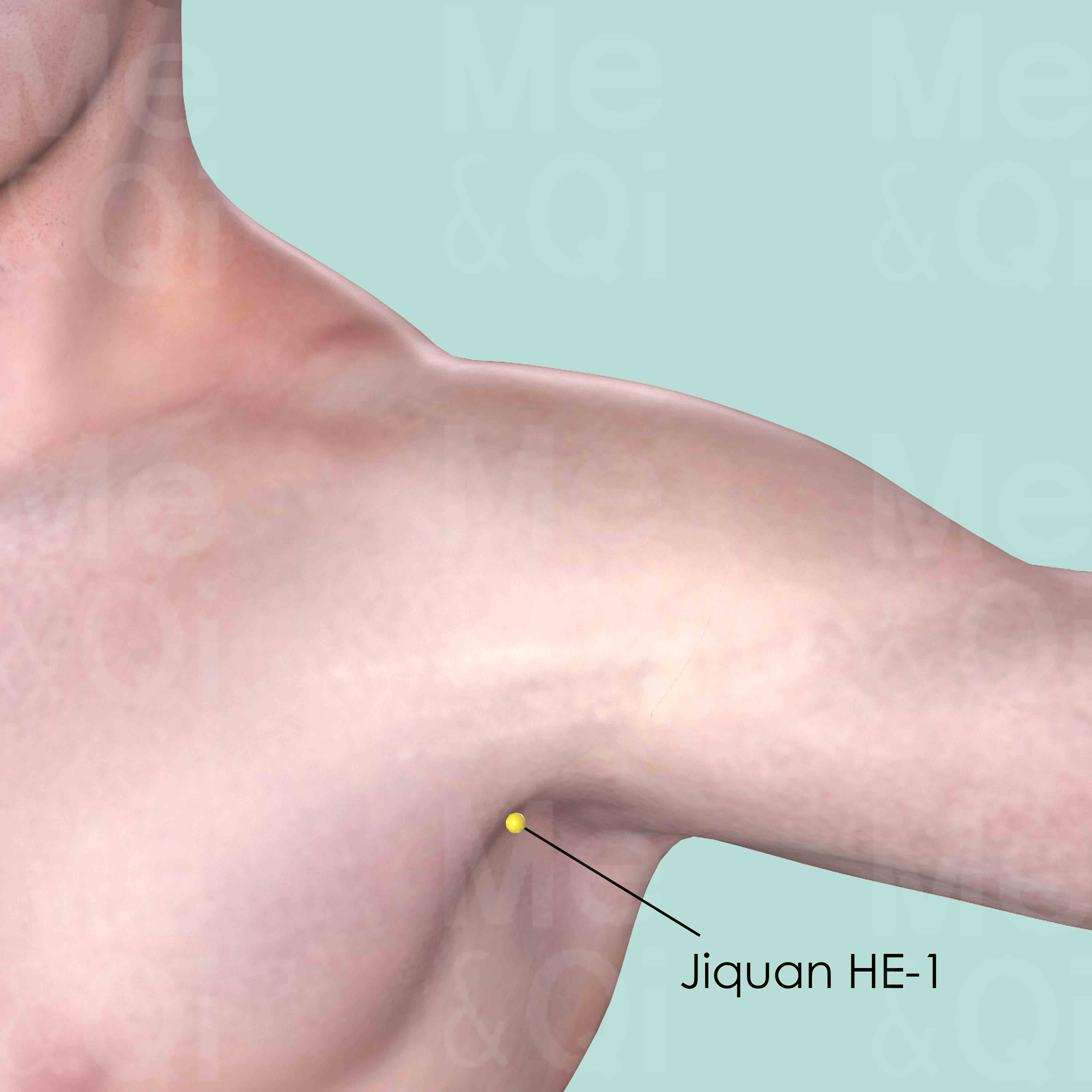Hypochondriac Fullnessaccording to TCM
Symptom families: Chest & Hypochondriac Pain and Distention, Chest Swelling, Congestion, and Physical Changes
Did you mean? Hypochondriac Distention
Root Causes of Hypochondriac Fullness in TCM
Explore below more details about what might cause Hypochondriac fullness according to TCM.
- By Syndrome
- By Organ
- Dampness
- Qi Stagnation
- Qi Deficiency
- Cold
- Heat
- View More Causes
- Liver
- Gallbladder
- Lung
Dampness
"Dampness" in TCM is a concept that describes a pattern of disharmony where the body accumulates excess moisture. Imagine the heavy, sticky feeling you get on a very humid day; that's similar to what dampness feels like internally. It can manifest as a sense of heaviness, bloating, sluggishness, or even a foggy mind. This condition is often thought to arise from environmental factors like living in a damp place, dietary habits that promote moisture in the body, or internal imbalances that hinder the body's ability to process fluids properly. In TCM, dampness can obstruct the normal flow of energy and fluids in the body, leading to various symptoms.... see more
Dampness Patterns That Can Lead to Hypochondriac Fullness
Common Symptoms: Hypochondrial Fullness With Warmth Relief Sticky Taste In The Mouth Feeling Of Heaviness Jaundice Abdominal Fullness Lower Abdominal Fullness Bitter Taste In The Mouth Lack Of Appetite
| Pattern Name | Relevant Symptoms | Relevant Formulas |
|---|---|---|
| Damp-Heat in the Liver | Hypochondrium fullness, Hypochondrial fullness with warmth relief, Abdominal fullness, Lower abdominal fullness, Bitter taste in the mouth, Sticky taste in the mouth, Lack of appetite, Nausea, Feeling of heaviness, Yellow vaginal discharge, Vaginal itching, Vulvar eczema, Vulvar sores, Bleeding between periods, Midcycle bleeding pain, Red and swollen scrotum, Red and swelling genital, Papules, Itchy vesicular rashes, Urinary dysfunction, Urinary burning, Dark urine... see more | Long Dan Xie Gan Tang | Yin Chen Hao Tang |
| Dampness in the Gallbladder | Hypochondrium fullness, Jaundice, Dull yellow complexion, Yellow eyes, Hypochondriac pain, Hypochondrial fullness with warmth relief, Nausea or vomiting, Fat malabsorption, Yellow sclera, Cloudy urine, Absence of thirst, Sticky taste in the mouth, Dull headache, Feeling of heaviness... see more | San Ren Tang |
Qi Stagnation
Qi Stagnation in TCM is like having a traffic jam in your body's energy system. Qi, the vital life force that flows through your body, is supposed to move smoothly to maintain health and balance. But with Qi Stagnation, this flow gets blocked or slowed down, like cars stuck on a highway. This can lead to symptoms like feeling stressed, emotional mood swings, and physical discomfort, often described as a feeling of fullness or tightness, especially in the chest or abdomen. It's as though the body's internal energy circulation is disrupted, causing various issues. TCM sees this as an energy flow problem, different from modern medicine's focus on specific physiological processes.... see more
Qi Stagnation Patterns That Can Lead to Hypochondriac Fullness
| Pattern Name | Relevant Symptoms | Relevant Formulas |
|---|---|---|
| Lung Qi Deficiency and Liver Qi Stagnation | Hypochondrium fullness, Coughing, Hypochondrial fullness with warmth relief, Dizziness, Headaches, Depression, Low energy, Moving pain, Hepatitis, Chronic cholecystitis, Chronic gastritis... see more | Xiao Chai Hu Tang |
Qi Deficiency
Qi Deficiency in TCM is like running low on battery power. Qi is the vital energy that powers every function in your body. When there's a Qi Deficiency, it means your body doesn't have enough of this essential energy. This can make you feel tired all the time, weak, or even cause shortness of breath. It's similar to how you feel when you haven't had enough sleep or nutritious food. Your body just doesn't have the energy it needs to perform at its best. Unlike modern medicine, which often focuses on specific physical causes for fatigue and weakness, TCM views Qi Deficiency as an overall energy depletion that affects your entire well-being, and it seeks to replenish and balance this vital energy.... see more
Qi Deficiency Patterns That Can Lead to Hypochondriac Fullness
| Pattern Name | Relevant Symptoms | Relevant Formulas |
|---|---|---|
| Lung Qi Deficiency and Liver Qi Stagnation | Hypochondrium fullness, Coughing, Hypochondrial fullness with warmth relief, Dizziness, Headaches, Depression, Low energy, Moving pain, Hepatitis, Chronic cholecystitis, Chronic gastritis... see more | Xiao Chai Hu Tang |
Cold
In TCM "Cold" as a pattern of disharmony refers to a specific type of imbalance within the body's systems, often linked to a deficiency or weakness. It's not about feeling physically cold or having a common cold, but rather a metaphorical description of certain symptoms and underlying conditions. When a TCM practitioner says someone suffers from "Cold," it usually implies that the body's Yang energy, which is warm and active, is insufficient or overpowered by Yin energy, which is cool and passive. Symptoms of Cold in TCM can include a general feeling of coldness, cold limbs, pale complexion, low energy, slow metabolism, and a preference for warmth. ... see more
Cold Patterns That Can Lead to Hypochondriac Fullness
| Pattern Name | Relevant Symptoms | Relevant Formulas |
|---|---|---|
| Stagnation of Cold in the Liver Channel | Hypochondrial fullness and distention with pain alleviated by warmth, Hypochondrial fullness with warmth relief, Testicular pain, Scrotal contraction, Vertical headaches, Chills, Cold extremities, Vomiting clear liquid, Vaginal atrophy... see more | Nuan Gan Jian |
Heat
In TCM "Heat" signifies an excess of Yang energy, leading to an imbalance where heat predominates over the body's cool Yin aspects. This condition is metaphorically akin to an internal over-heating. Symptoms indicative of Heat can include feelings of warmth, fever, sweating, irritability, red face, thirst with a preference for cold drinks, and a rapid pulse. The tongue may appear red with a yellow coating. Unlike the common interpretation of heat in terms of temperature, in TCM, it represents a state of hyperactivity or inflammation in the body.... see more
Heat Patterns That Can Lead to Hypochondriac Fullness
| Pattern Name | Relevant Symptoms | Relevant Formulas |
|---|---|---|
| Damp-Heat in the Liver | Hypochondrium fullness, Hypochondrial fullness with warmth relief, Abdominal fullness, Lower abdominal fullness, Bitter taste in the mouth, Sticky taste in the mouth, Lack of appetite, Nausea, Feeling of heaviness, Yellow vaginal discharge, Vaginal itching, Vulvar eczema, Vulvar sores, Bleeding between periods, Midcycle bleeding pain, Red and swollen scrotum, Red and swelling genital, Papules, Itchy vesicular rashes, Urinary dysfunction, Urinary burning, Dark urine... see more | Long Dan Xie Gan Tang | Yin Chen Hao Tang |
Liver
In TCM the Liver is viewed as the organ responsible for the smooth flow of Qi, Blood, and emotions throughout the body. It plays a key role in regulating mood, storing blood, supporting digestion, and ensuring the health of tendons and eyes. When the Liver malfunctions or is imbalanced in TCM, it can lead to a range of issues such as irritability, mood swings, menstrual irregularities, eye problems, and muscular stiffness or pain. A malfunctioning Liver in TCM reflects not only physical disturbances but also emotional and mental disharmony, emphasizing the holistic approach of TCM in addressing health and wellness.... see more
Liver Patterns That Can Lead to Hypochondriac Fullness
Common Symptoms: Hypochondrial Fullness With Warmth Relief Testicular Pain Scrotal Contraction Vertical Headaches Chills Cold Extremities Vomiting Clear Liquid Vaginal Atrophy
| Pattern Name | Relevant Symptoms | Relevant Formulas |
|---|---|---|
| Stagnation of Cold in the Liver Channel | Hypochondrial fullness and distention with pain alleviated by warmth, Hypochondrial fullness with warmth relief, Testicular pain, Scrotal contraction, Vertical headaches, Chills, Cold extremities, Vomiting clear liquid, Vaginal atrophy... see more | Nuan Gan Jian |
| Damp-Heat in the Liver | Hypochondrium fullness, Hypochondrial fullness with warmth relief, Abdominal fullness, Lower abdominal fullness, Bitter taste in the mouth, Sticky taste in the mouth, Lack of appetite, Nausea, Feeling of heaviness, Yellow vaginal discharge, Vaginal itching, Vulvar eczema, Vulvar sores, Bleeding between periods, Midcycle bleeding pain, Red and swollen scrotum, Red and swelling genital, Papules, Itchy vesicular rashes, Urinary dysfunction, Urinary burning, Dark urine... see more | Long Dan Xie Gan Tang | Yin Chen Hao Tang |
| Lung Qi Deficiency and Liver Qi Stagnation | Hypochondrium fullness, Coughing, Hypochondrial fullness with warmth relief, Dizziness, Headaches, Depression, Low energy, Moving pain, Hepatitis, Chronic cholecystitis, Chronic gastritis... see more | Xiao Chai Hu Tang |
Gallbladder
In TCM the Gallbladder has a unique role in storing and excreting bile, but more importantly, it's seen as crucial for decision-making and courage. It's closely connected to the Liver, assisting in the smooth flow of Qi (vital energy) and supporting the Liver's role in maintaining emotional balance. When the Gallbladder malfunctions or is imbalanced in TCM, it can lead to physical symptoms like gallstones, jaundice, or a bitter taste in the mouth. There might also be digestive disturbances, particularly related to fat metabolism. On an emotional level, a Gallbladder disorder can manifest as indecisiveness, timidity, or a tendency to easily succumb to stress. These symptoms highlight the TCM view of the Gallbladder as integral to both physical processes and emotional resilience.... see more
Gallbladder Patterns That Can Lead to Hypochondriac Fullness
| Pattern Name | Relevant Symptoms | Relevant Formulas |
|---|---|---|
| Dampness in the Gallbladder | Hypochondrium fullness, Jaundice, Dull yellow complexion, Yellow eyes, Hypochondriac pain, Hypochondrial fullness with warmth relief, Nausea or vomiting, Fat malabsorption, Yellow sclera, Cloudy urine, Absence of thirst, Sticky taste in the mouth, Dull headache, Feeling of heaviness... see more | San Ren Tang |
Lung
In TCM the Lungs are seen as the organ responsible for controlling Qi and respiration, as well as being a key part of the body's defensive system. They are thought to maintain the balance and flow of air and moisture, and are closely linked to the skin and hair. When the Lungs are imbalanced or malfunctioning in TCM, it can lead to respiratory issues like coughing or asthma, a weakened immune system, dry skin, and emotional disturbances such as sadness or grief. These symptoms are believed to arise from disruptions in the Lungs' ability to regulate Qi and protect the body, highlighting their central role in maintaining overall health and well-being.... see more
Lung Patterns That Can Lead to Hypochondriac Fullness
| Pattern Name | Relevant Symptoms | Relevant Formulas |
|---|---|---|
| Lung Qi Deficiency and Liver Qi Stagnation | Hypochondrium fullness, Coughing, Hypochondrial fullness with warmth relief, Dizziness, Headaches, Depression, Low energy, Moving pain, Hepatitis, Chronic cholecystitis, Chronic gastritis... see more | Xiao Chai Hu Tang |
TCM Herbal Formulas for Hypochondriac Fullness
Explore below some TCM herbal formulas used to address hypochondriac fullness, organized by cause and by formula type.
- By Cause
- By Formula Type
- Dampness
- Qi Stagnation
- Qi Deficiency
- Cold
- Heat
- View More Causes
- Formulas that clear heat and expel dampness
- Formulas that promote qi movement
- Formulas that clear heat from the organs
- Formulas that harmonize lesser yang-warp disorders
Top Formula for Dampness:
Long Dan Xie Gan Tang
Suitable for Dampness patterns that may cause hypochondriac fullness, such as Damp-Heat in the Liver
Learn moreAll Formulas Recommended for Hypochondriac Fullness Caused by Dampness
| Formula | Patterns Suitable For |
|---|---|
| Long Dan Xie Gan Tang | Damp-Heat in the Liver |
| Yin Chen Hao Tang | Damp-Heat in the Liver |
| San Ren Tang | Dampness in the Gallbladder |
Top Formula for Qi Stagnation:
Xiao Chai Hu Tang
Suitable for Qi Stagnation patterns that may cause hypochondriac fullness, such as Lung Qi Deficiency and Liver Qi Stagnation
Learn moreTop Formula for Qi Deficiency:
Xiao Chai Hu Tang
Suitable for Qi Deficiency patterns that may cause hypochondriac fullness, such as Lung Qi Deficiency and Liver Qi Stagnation
Learn moreTop Formula for Cold:
Nuan Gan Jian
Suitable for Cold patterns that may cause hypochondriac fullness, such as Stagnation of Cold in the Liver Channel
Learn moreTop Formula for Heat:
Long Dan Xie Gan Tang
Suitable for Heat patterns that may cause hypochondriac fullness, such as Damp-Heat in the Liver
Learn moreAll Formulas Recommended for Hypochondriac Fullness Caused by Heat
| Formula | Patterns Suitable For |
|---|---|
| Long Dan Xie Gan Tang | Damp-Heat in the Liver |
| Yin Chen Hao Tang | Damp-Heat in the Liver |
Formulas that clear Heat and expel dampness
These formulas are suitable for some hypochondriac fullness-causing patterns like Damp-Heat in the Liver.
One such formula is Yin Chen Hao Tang, with virgate wormwood as a key herb.
Other formulas of this category are listed in the table below.
All "formulas that clear heat and expel dampness" recommended for hypochondriac fullness
| Formula | Patterns Suitable For (if applicable) |
|---|---|
| Yin Chen Hao Tang | Damp-Heat in the Liver |
| San Ren Tang | Dampness in the Gallbladder |
Formulas that harmonize lesser Yang-warp disorders
These formulas are suitable for some hypochondriac fullness-causing patterns like Lesser Yang stage or Lung Qi Deficiency and Liver Qi Stagnation.
One such formula is Xiao Chai Hu Tang, with bupleurum root as a key herb.
Formulas that promote Qi movement
These formulas are suitable for some hypochondriac fullness-causing patterns like Stagnation of Cold in the Liver Channel.
One such formula is Nuan Gan Jian, with fennel seeds as a key herb.
Formulas that clear Heat from the Organs
These formulas are suitable for some hypochondriac fullness-causing patterns like Damp-Heat in the Liver.
One such formula is Long Dan Xie Gan Tang, with chinese gentian as a key herb.
Acupoints for Hypochondriac Fullness
Explore below some acupoints used to address hypochondriac fullness, organized by meridian.
- By Meridian
- Bladder Channel
- Governing Vessel
- Kidney Channel
- Heart Channel

Yishe BL-49
3 cun lateral to the lower border of the spinous process of the 11th thoracic vertebra (T11).

Zhiyang DU-9
On the back midline, in the depression below the spinous process of the 7th thoracic vertebra (T7).


